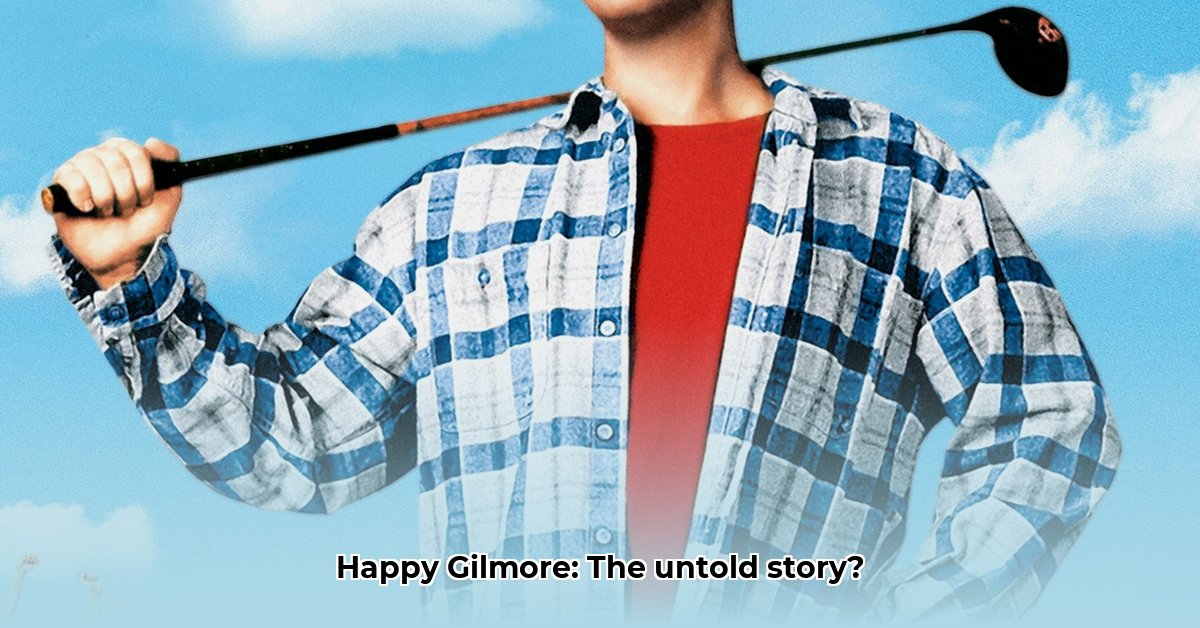
Happy Gilmore: More Than Just a Slapshot to the Face
Right, so Happy Gilmore. Is it just Adam Sandler shouting and hitting golf balls really hard? Ja, kinda. But there’s lekker more to it than that, bru. This isn’t your average sports movie – it’s a chaotic masterpiece of quotable lines, ridiculously over-the-top characters, and a surprisingly heartfelt underdog story. We’re going to unpack the whole shebang: the laughs, the surprisingly clever plot, and why this crazy movie still gets people chuckling years later. We'll explore its enduring appeal, dissect its comedic genius, and even offer some savvy advice on how to make your own comedy gold. Think of it as your cheat sheet to understanding why Happy Gilmore still slays after all these years.
From the get-go, we meet Happy, a hockey player whose career’s gone belly-up faster than a dropped koeksister. He’s got the skills, the raw power, but lacks the finesse. He’s a hothead, a loose cannon, but you can’t help but root for him. His struggles are relatable; his rage, oddly charming. Who hasn't felt like a square peg in a round hole, battling against expectations? Happy embodies that frustration perfectly and channels it into an incredibly unexpected career path: professional golf. Who knew a guy whose best friend was a hockey puck could become a surprisingly successful golfer? This unlikely journey forms the hilarious heart of the film. Isn’t it amazing how a simple premise can lead to such a memorable film?
Then there's Shooter McGavin, the epitome of everything Happy isn't. He’s the polished, arrogant professional golfer, the picture of upper-crust privilege. He’s the perfect villain, the smooth-talking, sneering antagonist who makes you want to cheer even louder for Happy. Their rivalry is the fuel that drives the film, a masterclass in comedic tension. Their clashes are legendary; a series of hilarious confrontations that build to that epic final showdown. Think of it like a sporting contest, but instead of elegant shots, you get anger-fueled drives and insults that sting worse than a moer.
But Happy Gilmore is more than just slapstick. The film weaves in surprisingly heartwarming themes. You see a different side of Happy when he fiercely protects his beloved Grandma, showcasing a softer side that balances his usual rough edges. This subtle emotional depth keeps you engaged, broadening the movie's appeal beyond those who appreciate only the crass humour. The movie explores family, responsibility, and that age-old quest to find your place in the world. It's all cleverly wrapped into a comedic package—a feel-good story despite the occasional chaotic moments. This unexpected depth probably contributes to the film's enduring popularity. Don't you think a movie that can make you laugh and cry simultaneously is something special?
So, what’s the secret to Happy Gilmore’s enduring appeal? It’s more than just a string of funny moments. The film’s success likely stems from a potent mixture: impeccable comedic timing, undeniably memorable characters (who can forget Bob Barker’s cameo?), and a storyline that, while often absurd, manages to tug at your heartstrings. It’s the sort of film that generates endless quotable lines and memes, instantly sharing itself across generations. It feels like a classic, an example of how to blend outrageous silliness with genuine emotional resonance. How many movies can you think of that achieve that balance between comedy and heart?
Even the polarized Rotten Tomatoes reviews reveal something about the movie's charm. Happy Gilmore isn't concerned with universal approval; it does its own thing, unapologetically forging its own path. And that's precisely its strength. The film serves as a reminder that sometimes the most unconventional routes lead to the most fulfilling triumphs. It’s a story of the underdog, a celebration of finding success in unexpected places, and a reminder that laughter can often be the best medicine.
Key Takeaways and Actionable Insights
Key Takeaways:
- Happy Gilmore's success lies in its unique blend of slapstick comedy, underdog narrative, and surprisingly insightful (if sometimes questionable) golf instruction.
- The film effectively uses character development and quirky supporting characters to enhance the comedic effect.
- To replicate this success, modern sports films need to find a similar balance between humour and heart.
- Focusing on relatable characters and situations is crucial for audience engagement.
- Subverting expectations and using unconventional approaches can lead to memorable comedic moments.
Here's what we can learn from Happy Gilmore's success:
- Relatable protagonist: Create a flawed but endearing central figure – someone audiences can root for, even with their faults.
- Subversive humor: Don't be afraid to break the mold. Embrace the unexpected, the absurd, and the unconventional.
- Strong supporting cast: Develop eccentric characters who enrich the narrative and provide comedic relief.
- Genre fusion: Find a way to blend genres effectively. This could be combining humor and social commentary, or perhaps merging sports and fantasy elements.
- Memorable moments: Create scenes that will be talked about long after the credits roll.
By following these steps, you can increase your chances of creating a modern sports comedy that resonates with audiences on multiple levels, just like Happy Gilmore did. Is it easy? No. Is it possible? Absolutely. The film remains a testament to the power of good storytelling, even when it involves a lot of shouting and flying golf clubs.